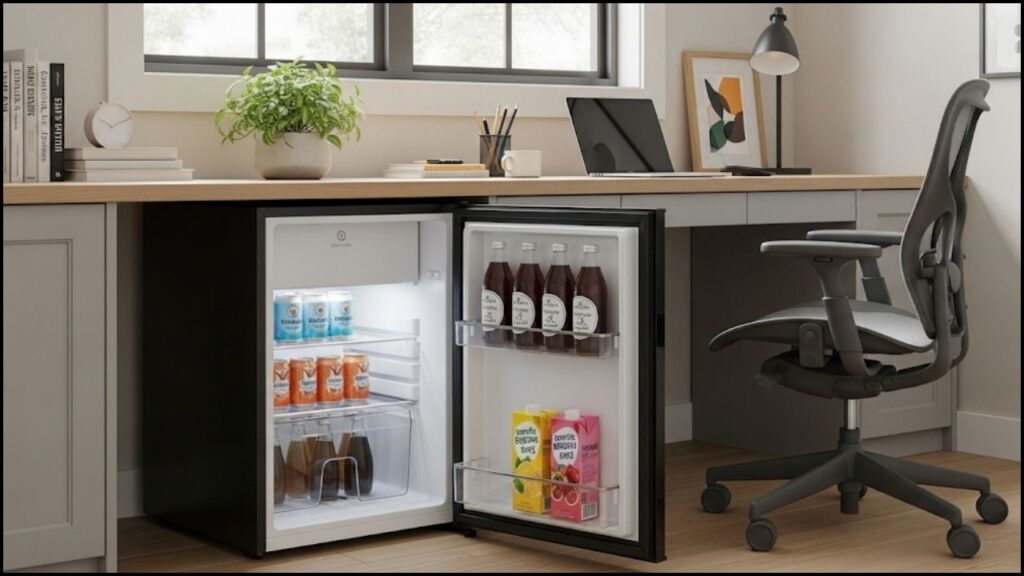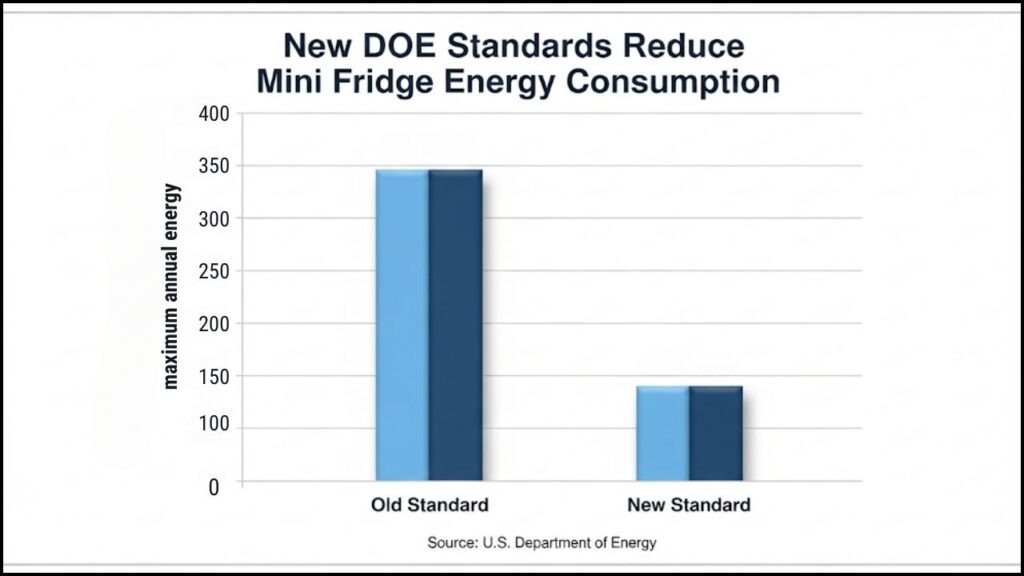New federal energy efficiency standards are set to transform the American mini fridge market, pushing manufacturers toward more innovative designs just as consumer demand expands beyond college dormitories into home offices, garages, and multigenerational living spaces. The changes promise long-term energy savings but may also impact upfront costs and model availability for consumers nationwide.

Key Takeaways
| Key Fact | Detail/Statistic |
| New Federal Mandate | The Department of Energy (DOE) has finalized new energy conservation standards for consumer refrigerators, including compact models. |
| Projected Consumer Savings | The new standards are projected to save American households approximately $36 billion on energy bills over 30 years. |
| Market Growth | The global compact refrigerator market is anticipated to grow significantly, driven by urbanization and evolving lifestyle trends. |
| Industry Response | Manufacturers are adapting by investing in advanced compressor technology and improved insulation to meet the stricter requirements. |
Stricter Energy Efficiency Standards Take Hold
The U.S. Department of Energy (DOE) has finalized new conservation standards that will significantly impact the design and performance of compact refrigerators. These regulations, part of a broader federal initiative to reduce energy consumption and carbon emissions, require appliances manufactured in or imported into the United States starting in 2029 to consume substantially less electricity.
According to a DOE analysis, the standards for refrigerators and freezers are expected to cut over 500 million metric tons of carbon dioxide emissions over three decades. For the average consumer, this translates to tangible savings on utility bills, though it presents a considerable engineering challenge for manufacturers.
“These updated standards are a win for consumers and the climate,” said a DOE spokesperson in a recent statement. “By making common household appliances more efficient, we are helping families save money while significantly reducing our nation’s carbon footprint.” The new rules focus on improving technologies like compressors and insulation, which are the primary drivers of a refrigerator’s energy use.
The Evolving Role of the Mini Fridge
The market for the mini fridge is no longer defined solely by the back-to-school rush. A fundamental shift in how people live and work is driving new demand for these small appliances. The rise of remote work has converted spare rooms into home offices, creating a need for convenient access to beverages and snacks away from the main kitchen. “We’ve seen a clear diversification in the consumer base for the Mini Fridge,” explains Dr. Michael Lowe, a consumer behavior analyst at the Consumer Research Institute. “It’s now a lifestyle product. People want them for home bars, media rooms, and even master bedroom suites. The pandemic accelerated this trend by re-centering daily life within the home.”

This trend is complemented by the growth in accessory dwelling units (ADUs), in-law suites, and the increasing number of young adults living in smaller, urban apartments, where a full-sized second refrigerator is not feasible. This has created a demand for more sophisticated, aesthetically pleasing models that blend with home decor, a departure from the purely functional white or black boxes of the past.
Manufacturers Respond with Innovation
In response to both regulatory pressure and changing consumer tastes, appliance manufacturers are overhauling their compact refrigerator lines. The industry is moving away from less efficient thermoelectric cooling systems, particularly in larger mini fridges, in favor of smaller, highly efficient variable-speed compressors.
“The challenge is to reduce energy consumption without sacrificing performance or internal capacity,” said Jill Notini, a vice president for communications and marketing at the Association of Home Appliance Manufacturers (AHAM), in an interview. “Our members are investing heavily in research and development to bring next-generation insulation and refrigeration technologies to the market to meet these new energy efficiency standards.”
This innovation extends to features previously reserved for full-size appliances. Consumers can now find mini fridge models with separate freezer compartments, digital temperature controls, glass doors, and even smart-home connectivity. These premium features cater to the growing segment of buyers who view the mini fridge as a permanent home fixture rather than a temporary dorm accessory.
Impact on Consumer Choice and Cost
While the long-term benefits of the new standards include lower energy bills, consumers may see a short-term increase in the retail price of some mini fridge models. The use of more advanced components and materials required to meet the stringent efficiency targets can raise manufacturing costs.
Consumer advocacy groups, however, emphasize that the lifetime savings will outweigh the initial investment. The Appliance Standards Awareness Project (ASAP), a nonprofit organization, estimates that the total utility bill savings for a consumer who purchases a compliant model will be two to three times the initial price increase over the appliance’s lifespan.
As the 2029 compliance date approaches, consumers can expect to see a transition in retail showrooms. Retailers will sell off existing inventory, while newly designed, compliant models will be explicitly labeled with updated EnergyGuide information, helping buyers make informed decisions based on both purchase price and long-term operating costs.
From Prep Space to Style Statement: Kitchen Island Décor Ideas Shaping Modern Interiors
